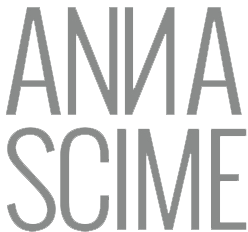LAKE STURGEONS’ GUIDE FOR SURVIVING THE ANTHROPOCENE
While aquatic and terrestrial megafauna the world over are in dire straits, sturgeon are perhaps the most endangered species group on the planet. At present all 27 species of sturgeon and paddlefishes (Order Acipenseriformes) are found on the IUCN Red List, the majority being classified as Critically Endangered, with four species possibly extinct (http://www.iucn.org). Lake Sturgeon (Acipenser fulvescens) are one of two sturgeon species whose numbers are estimated to be increasing after long term efforts by scientists and conservationists throughout the United States, Canada and neighboring Indigenous Nations. These experiments in rewilding are marked by rigorous design, data collection and hypothesis testing, but only time will tell if these efforts have truly been successful, and whether or not these living fossils that survived the extinction of the dinosaurs, will survive us.
Local sturgeon populations in Lake Erie and Lake Ontario are two of the few wild populations left in the U.S. This exhibition explores their profound and distinct effects on the nature and functioning of the ecosystems that they are a part of.
Lake Sturgeons' Guide for Surviving the Anthropocene (LSGFSA) is an experimental, multimedia installation created from nine years of research and fieldwork collaborations with scientists working in biology, geology and ecology. It consists of a series of short video essays and a multimedia installation comprised of interrelated pieces, including: Annual Rings, Observational Study A, Observational Study B, Untitled Scale, Wonderbox 1, Wonderbox 2, Screen 1, Monitor 1, Monitor 2, and more.
The project examines history, art, culture, and language through an ecological lens pointed at a single species, and zooms outward from there. Observational, reflexive and poetic displays flow together to create a dialogic portrait of Lake Sturgeon and their ecosystem, while simultaneously examining our place as human beings in these same systems.
The Observational Study B live stream archive can be found here.
Selections from LSGFSA will be on view as part of From the Great Lakes to the Great Plains: The Visible Current of Climate Change at Bemis Center for Contemporary Arts in 2025.
LSGFSA was first exhibited at the Burchfield Penney Art Center August 13, 2021 - November 28, 2021.
LSGFSA mutimedia art project was generously supported by the Global Warming Art Project grant, Ben Perrone and the Environmental Maze project donors, and administered by the Art Services Initiative of Western New York. It would not be possible without the support of the Lower Great Lakes Fish & Wildlife Conservation Office, U.S. Fish & Wildlife Service (USFWS).
And I am beyond grateful to the following people and organizations for their support and generosity over the last nine years:
Lead Consultants & Collaborators: Neil Terry, Ph.D. (United States Geological Survey (USGS) – Geological Sciences); Dimitry Gorsky, Ph.D. (U.S. Fish and Wildlife Service (USFWS) - Biological Sciences); & Neil Patterson Jr. (SUNY-ESF Center for Native Peoples and the Environment & Haudenosaunee Environmental Task Force – Ecological Sciences)
Additional interviews, fieldwork and research support is provided by scientists and conservationists at Tuscarora Environmental Program, NYSDEC, NYS Sea Grant, and SUNY Buffalo State's Great Lakes Center, as well as local anglers, Firekeepers, family, friends and storytellers who were generous enough to share their knowledge with me. I am grateful as well to the sturgeon for teaching me so many things, and for reminding me of how much magic and life these waters still contain.
Add'l consultants & technical work by:
U.S. Fish and Wildlife Service (USFWS): Kofi Fynn-Aikins (Complex Manager) and Fish Biologists: Zy Biesinger, Ph.D., Eric Bruestle, Curtis Karboski, Scott Schlueter, John Sweka, Ph.D., Betsy Trometer, Colin Mulloy, Jacob Cochran, Greg Kronisch, Ray Li, Gregory Jacobs, Shana Chapman
Tuscarora Environmental Program (TEP): Rene Rickard (Director), Bryan Printup (GIS Manager), Bradley Thomas (Intern), Woodrow Rickard (Intern), Waylon Wilson (Tech), Rick Hill (Six Nations of the Grand River)
Haudenosaunee Environmental Task Force (HETF): Dave Arquette (Director), Jare Cardinal (NPP5)
New York State Department of Environmental Conservation (NYSDEC): William Evans (Fish Culturist & Hatchery Manager), Erika Stoddard (Fish Culturist), Mark Ferron (Fish Culturist), David Domachowske (Fish Culturist), Donald Einhouse (Supervisor), Doug Zeller (Captain), Brian Beckwith (Tech), Rich Zimar (Senior Tech), Mark Dusablon (Tech), Ann Wilcon-Swanson (Seasonal), Mary Greagan (Fish and Wildlife Technician 1), Lisa K. Holst (Rare Fish Unit Leader, Division of Fish and Wildlife)
SUNY Buffalo State Great Lakes Center: Lyubov E. Burlakova, Ph.D. (Senior Research Scientist), Mark Clapsadl (Research Scientist/Station Manager), Susan E. Daniel (Research Scientist), Alexander Y. Karatayev, Ph.D. (Director)
United States Geological Survey (USGS): Dawn E. Dittman, Ph.D. (Research Ecologist)
New York State Sea Grant: Stacy L. Furgal (Great Lakes Fisheries and Ecosystem Health Specialist), Nate Drag (Great Lakes Literacy Specialist), Megan Kocher (Great Lakes Outreach Coordinator)
Installation Support @ BPAC: Jake Sommer, Matthew Kantar, Michael Myers, Jake Mang, Neil Terry, Dimitry Gorsky, Peter Gorsky, Bill Evans, Erika Stoddard, Mark Ferron, John Malinowski, KD Brown, Brandon Reyes, Tom Holt, John Smigielski, Robert Cutrona, Tim Thomas, Tim Noble, Mary Kozub, William Menshon, Matt Stepien, Sonny Baker
Add'l production + post-production support: Neil Terry, KD Brown, Liz Chow, Natalie DiIenno, Angelica Piedrahita, Masha Sha, Lisa Jane Davis, Liz Flyntz, Annette Daniels-Taylor
A special thank you to the entire staff of the Burchfield Penney Art Center, especially curators John Malinowski and Don Metz, and director Scott Propeak. And to Tullis Johnson, Tiffany Gaines, Renata Toney, Mary Kozub (& the docents :), Kathleen Heyworth, Heidi Freedman, Tom Holt, John Smigielski, Robert Cutrona, Tim Thomas, Kathy Shiroki, Michaela Worosz, William Menshon, Matt Stepien, Sonny Baker

